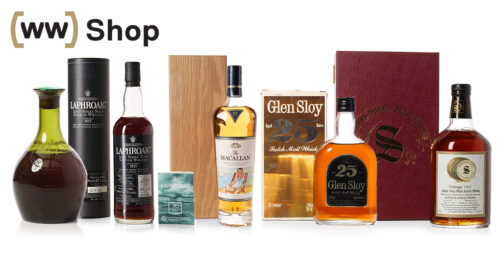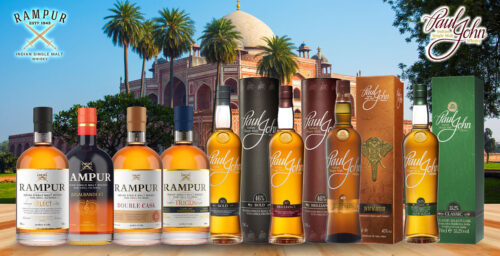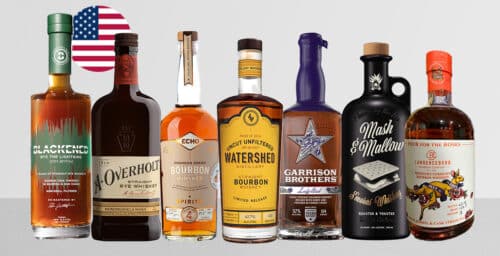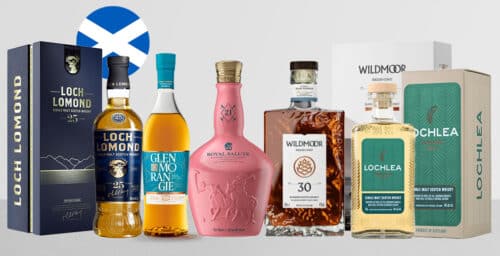While most of us in the whiskey world are familiar with the term Bottled-in-Bond, few understand its history, limitations, and advantages. The Bottled-in-Bond Act was a piece of federal legislation that provided quality assurance and a means of standardization for one sector of a growing whiskey market.
The Act was originally enacted in 1897 as a quality assurance backed by the U.S. government, and a means of standardizing at least one sector of a rapidly growing whiskey market. By creating a set of legal requirements for bottled-in-bond whiskey, the bill improved product consistency and significantly elevated product standards.
While the late 1800’s and early 1900’s were a time when American whiskey was quickly expanding and becoming more popular, it was also a time when spirits that had added sugar, coloring, and flavoring were commonplace. Because the industry was regulated and less standardized than our current market, spirits were often much less palatable than current offerings.
This led to a culture of additives to mask unfortunate impurities and congeners, and a cocktail culture that aimed to do the same. It was by no means a terrible time to be drinking, but many industry leaders and consumers alike thought it could benefit from a touch of regulation. Led by actual historic figure Colonel Edmund Haynes Taylor Jr., of Buffalo Trace’s premium offerings of the same name, the industry bucked tradition and demanded quality assurance. The Bottled-in-Bond act was passed in response to this demand.
According to the TTB, Bottled-in-Bond restrictions are as follows:
- (i) Composed of the same kind of spirits produced from the same class of materials;
- (ii) Produced in the same distilling season by the same distiller at the same distillery;
- (iii) Stored for at least four years in wooden containers wherein the spirits have been in contact with the wood surface except for gin and vodka which must be stored for at least four years in wooden containers coated or lined with paraffin or other substance which will preclude contact of the spirits with the wood surface;
- (iv) Unaltered from their original condition or character by the addition or subtraction of any substance other than by filtration, chill proofing, or other physical treatments (which do not involve the addition of any substance which will remain incorporated in the finished product or result in a change in class or type);
- (v) Reduced in proof by the addition of pure water only to 100 degrees of proof; and
- (vi) Bottles at 100 degrees of proof.
Essentially, this means that all Bottled-in-Bond spirits must follow the restrictions of their spirit class, be from one single distillery during one distilling season, be four years of age (and further, aged in new charred American white oak for bourbon), not contain any additives, and be proofed to a standard 100 proof (or 50% alcohol by volume).
Why this is important today is becoming more and more clear as new bourbon brands pop up left and right. Although the problems the industry faced in 1897 are not exactly the same problems we face today, the search for transparency is as salient as ever. With NAS expressions reigning supreme and contract distillation, sourcing, and repackaging becoming standard, Bottled-in-Bond provides the same sense of quality, consistency, and reliability that it did in its nascence.
In addition to quality assurance, many BIB expressions are classic industry workhorses. The high proof of these whiskies make them perfect for cocktails, while their legacy and history, in many cases, make them affordable, if not cheap. As we wrote in this recent article, “a well-made cocktail gives at least half its attention to the base spirit…spirits with proofs lower than 100 have a hard time muscling through sweet and bitter amendments, especially fortified wines, liqueurs and amaros.”
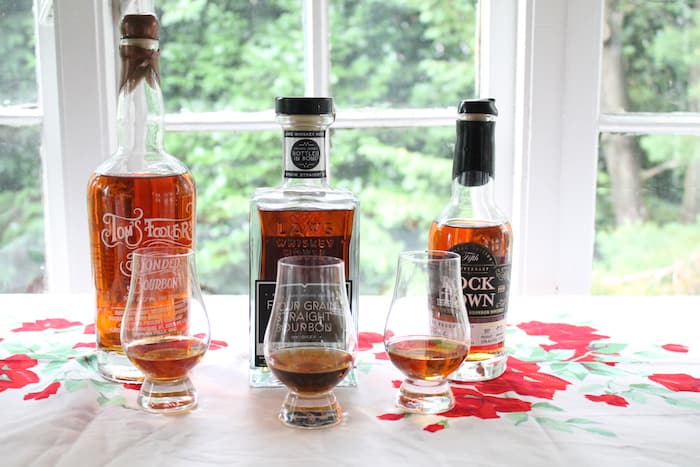
Although requiring more time and effort than many newer whiskey releases, Bottled-in-Bond standards have become more appealing to smaller craft producers. No longer just an old brand’s game, smaller bottled-in-bond craft bourbon releases have started to make their way onto the market. Brands like Laws, Tom’s Foolery, and Rock Town have all released Bottled in Bond expressions, which I tasted through for this article. Ranging from quite tasty to not the worst, craft BIB surely has some work to do, but the market’s future is bright and full of rising stars. Old Grandad, E. H. Taylor, and Old Forester have some very fierce competitors!
As in my previous capsule reviews I will be reviewing from worst to best. Read on for my round up and rating of these whiskies. A note on scoring: I’m using a scale from 1 to 5, with 1 being undrinkable even in dire circumstances, and 5 being a perfectly respectable whiskey to share with friends without shame
A.D. Laws Four Grain Straight Bourbon Bottled-in-Bond
Based in Denver, Colorado, Law’s Whiskey House began producing whiskey in 2011. Using custom Vendome stills, Independent Stave Co. barrels, and majority locally sourced grains, Law’s production strategy has it set for success. Corn, barley, wheat, and rye make up the mash bill of Law’s Whiskey Houses’s sour mash process. After distillation, the spirit is aged four years. This particular release is an ode to Law’s history; it marries 28 single barrels, 16 of which are from each one of their initial 16 spirit runs. Approximately $70, Law’s will certainly set you back compared to other standard BIB bottles.
Orange marmalade in the glass, Law’s is entirely inviting. Chocolate malt layered with new make, butter coffee, malted milk balls, and cheapy milk chocolate define the nose. Very soft and flat on the palate, Law’s has a chocolate and grain forward element that follows from nosing to finish. Peanut butter & Nutella sandwich, Red Hots candy, and burnt cinnamon make for a pleasant mid-palate. As it opens, the flat, burnt element of the dram is accompanied by damp bark and an inescapable sourness and bitterness.
The finish remains in line with the palate, bringing cardboard that is somehow both wet and burnt to the experience. “A” for effort and grain integration, but “C” for follow-through.
Final Score: 2
Rock Town Fifth Anniversary Bourbon
As I wrote in my full-fledged review of Rock Town, the whiskey is a recent silver medal winner at the San Francisco World Spirits Competition. Produced in Little Rock, Arkansas, Rock Town also sources grains as well as barrels locally. A blend of corn, wheat, and malted barley, Rock Town ages for the required four years in #4 char barrels. At $65 for a 375, it is pretty pricey.
Medium caramel in the glass, and sweet on the nose, Rock Town seems promising. Flamed bananas, warm dough, and vanilla sugar start the nosing experience. Macerated tropical fruits bring funk and tropical heat to the party. As it opens, Rock Town emits a lovely mix of buttered popcorn, fresh cut grass, and funky papaya juice. Instantly bitter and almond-forward on the palate, the dram has BIB burn, but benefits from the hot fruit of the nose.
Bitter, chocolately, and tropical, Rock Town ends on a chocolate popcorn note. Altogether a strange, but not unenjoyable experience.
Final Score: 4
Tom’s Foolery Bonded Bourbon
I reviewed Tom Foolery’s standard bourbon last year and was underwhelmed, so I was hesitant to taste another expression. Unlike the regular bourbon from Tom’s Foolery, the bonded edition has been aged twice as long, moving from two years to four. My initial review of the two year was (surprise!) that it tasted far too young to be enjoyable. Hailing from Chagrin Falls, Ohio, Tom’s Foolery is a pot-distilled mash of corn, wheat, and malted barley.
It’s honeyed gold in the glass. Creamed corn and Sweet Tarts kick off the nose, followed by a combination of scents that screams grandma’s laundry room: dust and mothballs, bleach, and stale sugar. Creamed corn returns on the palate, transforming into vanilla and corn custard topped with whipped cream and macaroons, and Wonderbread with mayo. Somehow essentially just sweet corn water, Tom’s Foolery tastes fresh and sweet.
Although slightly hot and bitter on the finish, Tom’s Foolery was a pleasant surprise. Maybe it’s my love of all things corn, but I can’t help be pleased as punch with this BIB expression; sweet, mild, and fun Tom’s Foolery takes the cake. I give Tom both the highest score and the award for most improved!

